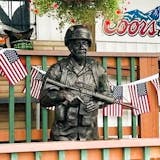The 2015 Lincoln MKC like that driven by actor Matthew McConaughey in commercials is a comfortable haven whose interior is so quiet it invites contemplative thoughts — and not just by McConaughey.
In its first model year, the compact MKC also is the smallest sport utility vehicle ever to express Lincoln's brand of luxury.
There's soft Scottish leather seat trim and welcoming "puddle lights" that not only courteously illuminate the ground by the front doors but project the Lincoln logo there, too, when a driver with key fob approaches.
Even shifting the MKC is different, as Park, Reverse and other gears are activated by a vertical line of push buttons on the dashboard, rather than a gear shift lever.
Yet, the MKC, which has seating for five, has a starting retail price that's less than that of many competitors and less than what many people seem to expect. Specifically, starting manufacturer's suggested retail price, including destination charge, is $33,995 for the base, 2015 MKC with front-wheel drive. The lowest starting retail price for a 2015 MKC with all-wheel drive is $36,490.
Two key reasons for the pricing: The MKC is based on the Ford Escape SUV and built at the same Louisville, Kentucky, factory as the Escape, and the MKC is offered only with turbocharged, four-cylinder engines.
The base 2-liter engine generates 240 horsepower and 270 foot-pounds of torque. An uplevel and larger 2.3-liter turbo four cylinder produces a V-6-like 285 horsepower and 305 foot-pounds of torque. The uplevel engine comes only with all-wheel drive. Starting retail price for an MKC with this engine is $41,040. Both MKC engines are mated to six-speed automatic transmissions.
Competitors include other compact premium SUVs, such as the 2015 Acura RDX, which has a starting retail price of $36,015 with 273-horsepower V-6 and six-speed, automatic transmission and front-wheel drive.


